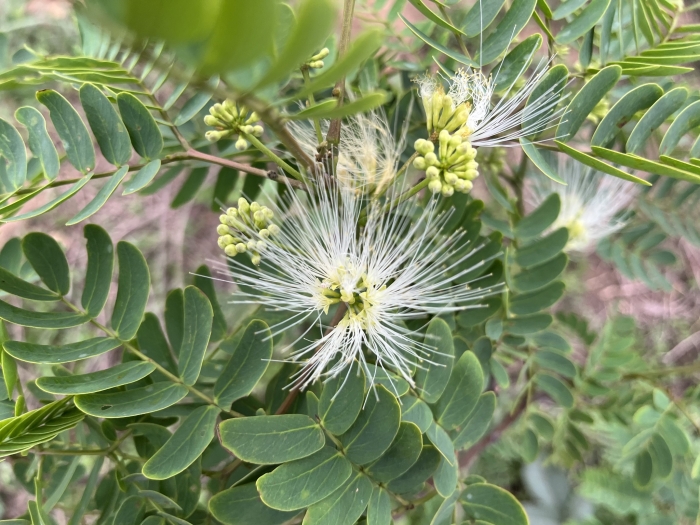Kalkora Mimosa
(Albizia kalkora)
Kalkora Mimosa (Albizia kalkora)
/
/

黃美滿
CC BY 4.0
Image By:
黃美滿
Recorded By:
Copyright:
CC BY 4.0
Copyright Notice:
Photo by: 黃美滿 | License Type: CC BY 4.0 | License URL: http://creativecommons.org/licenses/by/4.0/ | Rights Holder: 黃美滿 | Publisher: iNaturalist | Date Created: 2023-04-15T03:31:10Z |































Estimated Native Range
Summary
Albizia kalkora, commonly known as Kalkora Mimosa or Silk Tree, is a deciduous tree native to the forested regions of Southeastern Asia. It thrives in subtropical climates, often along riverbanks, forest clearings, and other open, sunny areas with well-drained soils. This species typically grows at a moderate rate to a height of 30-60 feet (9-18 meters) and a width of 25-35 feet (8-11 meters). The Kalkora Mimosa has a spreading canopy with feathery, finely divided leaves, giving it a light, airy appearance. It produces clusters of fragrant, fluffy, white or yellow flowers in the summer, which are highly attractive to pollinators. The flowers are followed by flat seed pods that persist into winter.
The Kalkora Mimosa is valued for its ornamental features, including its showy flowers and fern-like foliage, which can provide light, dappled shade. It is used in landscaping for urban planting, as a shade tree, and occasionally as a street tree. It requires full sun and adapts to a range of soil types, including clay, loam, and sandy soils, provided they are well-draining. While it prefers medium moisture, it can tolerate some drought once established. Gardeners should be cautious of its potential invasiveness outside its native range, as it can spread aggressively in favorable conditions. It is also susceptible to mimosa wilt, a fungal disease that can be fatal to the tree.CC BY-SA 4.0
The Kalkora Mimosa is valued for its ornamental features, including its showy flowers and fern-like foliage, which can provide light, dappled shade. It is used in landscaping for urban planting, as a shade tree, and occasionally as a street tree. It requires full sun and adapts to a range of soil types, including clay, loam, and sandy soils, provided they are well-draining. While it prefers medium moisture, it can tolerate some drought once established. Gardeners should be cautious of its potential invasiveness outside its native range, as it can spread aggressively in favorable conditions. It is also susceptible to mimosa wilt, a fungal disease that can be fatal to the tree.CC BY-SA 4.0
Plant Description
- Plant Type: Shrub, Tree
- Height: 30-60 feet
- Width: 25-35 feet
- Growth Rate: Rapid
- Flower Color: Yellow
- Flowering Season: Spring
- Leaf Retention: Deciduous
Growth Requirements
- Sun: Full Sun
- Water: Medium
- Drainage: Medium, Fast
Common Uses
Border Plant, Fragrant
Natural Habitat
native to the forested regions of Southeastern Asia
Other Names
Common Names: Silk Tree, Kalkora Silk Tree
Scientific Names: , Albizia kalkora, Acacia macrophylla, Albizia coreana, Albizia esquirolii, Albizia glabrior, Albizia henryi, Albizia julibrissin, Albizia julibrissin var. glabrior, Albizia kalkora var. coreana
GBIF Accepted Name: